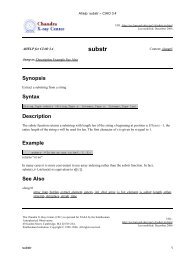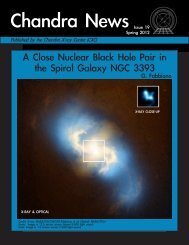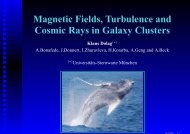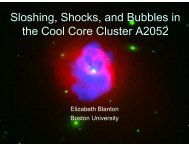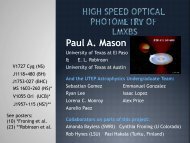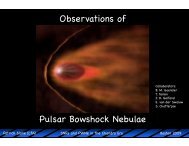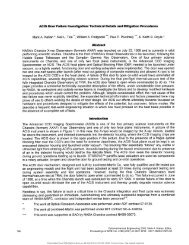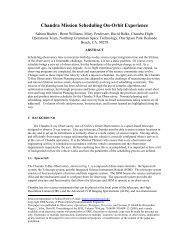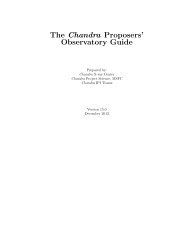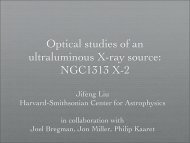observational overview of state transitions in x-ray binaries
observational overview of state transitions in x-ray binaries
observational overview of state transitions in x-ray binaries
Create successful ePaper yourself
Turn your PDF publications into a flip-book with our unique Google optimized e-Paper software.
(McCl<strong>in</strong>tock & Remillard 2005)<br />
HARD STATE<br />
I’ll use the Figures from MCl<strong>in</strong>tock and Remillard to illustrate the spectral and variability<br />
properties, with energy spectra on the left and power spectra on the right.<br />
The first <strong>state</strong> that I show is the hard <strong>state</strong>, the most common <strong>state</strong>. This <strong>state</strong> has a very hard<br />
spectrum that is <strong>of</strong>ten completely dom<strong>in</strong>ated by a non-thermal component, whose orig<strong>in</strong> is<br />
still a topic <strong>of</strong> debate, but is likely related to the presence <strong>of</strong> a steady radio jet outflow. The<br />
thermal accretion disk component is very weak <strong>in</strong> this <strong>state</strong>.<br />
Variability is very strong. The power spectra show very strong noise with correspond<strong>in</strong>g<br />
amplitudes <strong>of</strong> 40%. QPOs are only seen when the source is becom<strong>in</strong>g lum<strong>in</strong>ous and is close to<br />
a <strong>state</strong> transition.<br />
Hard <strong>state</strong>s have been observed up to 20% Ledd, so the term low/hard that was <strong>of</strong>ten used is<br />
a bit <strong>of</strong> a misnomer. It is (together with the quiescent <strong>state</strong>) the only <strong>state</strong> observed below 1%<br />
Ledd.<br />
As mentioned before, sources <strong>in</strong> the hard <strong>state</strong> also show strong radio emission, with a flat or<br />
<strong>in</strong>verted spectrum, which <strong>in</strong>dicates a self-absorbed compact jet. The jet also contributes<br />
significantly to the near-<strong>in</strong>frared emission.



